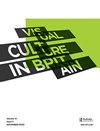True to Life: British Realist Painting in the 1920s and 1930s, Scottish National Gallery of Modern Art, July 1–October 29, 2017
Q2 Arts and Humanities
引用次数: 0
Abstract
‘True to Life’ at the Scottish National Gallery of Modern Art is an exhibition largely of storeroom contents, yet this is not a criticism of the artworks, artists or the curators, Patrick Elliott and Sacha Llewellyn. This exhibition of over ninety infrequently seen ‘realist’ works from the interwar period is a reminder of how easily the dominant narratives of art – here the modernist narrative of the twentieth century – censure and forget. The interwar period has been characterized as one of regression – ignorable and retrograde apart from the small strand of valiantmodernists easily typified by The Seven and Five Society when its membership included Ben Nicholson, Barbara Hepworth andHenryMoore. Thosewho shunnedmodernism have accordingly been sidelined in art history and collections. It is a stark change in fortunes, as British realist art was immensely popular in the 1920s and 1930s, and staunchly advocated by the Royal Academy (RA). The annual Summer Exhibitions either outright rejected modernist tendencies, or relegated them to a single room, which had been assigned to ‘the newmovements in art with which it is not in sympathy but which it could not entirely ignore’. A number of the works shown here were exhibited at the Academy, with the promotional image for ‘True To Life’, By the Hills by Gerald Leslie Brockhurst, featuring in the 1939 Summer Exhibition and selling for 850 guineas. It is clear why Brockhurst’s immaculate portrait of Lady Marguerite Strickland takes this role – the ‘brushless’ style achieves almost photographic levels of realism, while the poised sitter enigmatically averts her eyes away from the viewer. The background of darkened receding hillsides is influenced by Da Vinci’sMona Lisa. Mystery, glamour, high society and an unusually elongated neck mesmerizingly collide. A quiet yet palpable tension is apparent in a number of the works. Charles Spencelyah’s domestic scene Why War? and Harry Riley’s effectively anonymized self-portrait in ARP (Air Raid Precautions) uniform and gas mask titled Me confront the historical context of the Second World War meditatively. Spencelyah’s potent, almostVictoriannarrativepaintingdepicts a First World War veteran staring into space, apparently with resignation as the world descends once again into chaos during the Sudeten Crisis. It was, alongwithBy TheHills, themost talked-of painting at the RA in 1939, andwas considered one of themost powerful images of the unfolding crisis. Algernon Newton’s hauntingly still city streets, on the other hand, are paintings that《真实的生活:20世纪二三十年代的英国现实主义绘画》,苏格兰国家现代美术馆,2017年7月1日至10月29日
苏格兰国家现代艺术画廊的“真实生活”展览主要是储藏室的内容,但这并不是对艺术品、艺术家或策展人帕特里克·埃利奥特和萨莎·卢埃林的批评。此次展览展出了90多件罕见的两次世界大战期间的“现实主义”作品,提醒人们,主流的艺术叙事——这里是20世纪的现代主义叙事——是多么容易受到谴责和遗忘。两次世界大战之间的时期被描述为一个倒退的时期——除了一小群勇敢的现代主义者之外,这是一个可以忽略和倒退的时期,他们很容易以“七与五协会”为代表,当时该协会的成员包括本·尼科尔森、芭芭拉·赫普沃斯和亨利·摩尔。因此,那些回避现代主义的人在艺术史和收藏中被边缘化了。这是一个明显的命运变化,因为英国现实主义艺术在20世纪20年代和30年代非常流行,并得到了皇家学院(RA)的坚定倡导。一年一度的夏季展览要么直接拒绝了现代主义倾向,要么把它们放在一个单独的房间里,这个房间被分配给“它不同情但不能完全忽视的艺术新运动”。这里展出的许多作品都在学院展出,杰拉尔德·莱斯利·布罗克赫斯特的《真实生活》的宣传图片《山丘旁》在1939年夏季展览中展出,售价850坚尼。布罗克赫斯特为玛格丽特·斯特里克兰夫人拍摄的完美肖像之所以能扮演这个角色,这一点很清楚——“无刷”风格几乎达到了摄影的现实主义水平,而这位沉着的保姆则神秘地将目光从观众身上移开。昏暗的后退山坡的背景受到达的《蒙娜丽莎》的影响。神秘、魅力、上流社会和异常细长的脖子令人着迷地碰撞在一起。在许多作品中,一种平静而明显的紧张感显而易见。查尔斯·斯彭斯利亚的国内场景为什么是战争?哈里·莱利(Harry Riley)穿着ARP(空袭预防措施)制服和防毒面具的匿名自画像《我》(Me)沉思地直面了第二次世界大战的历史背景。Spencelyah强有力的、几乎是维多利亚时代的恐怖绘画描绘了一位第一次世界大战老兵凝视太空,在苏台德危机期间,当世界再次陷入混乱时,他显然是听天由命。这是1939年RA最受关注的绘画作品,与《the Hills》一起,被认为是危机发展中最有力的图像之一。另一方面,阿尔杰农·牛顿令人难忘的静止的城市街道是
本文章由计算机程序翻译,如有差异,请以英文原文为准。
求助全文
约1分钟内获得全文
求助全文
来源期刊

Visual Culture in Britain
Arts and Humanities-Visual Arts and Performing Arts
CiteScore
0.60
自引率
0.00%
发文量
1
 求助内容:
求助内容: 应助结果提醒方式:
应助结果提醒方式:


